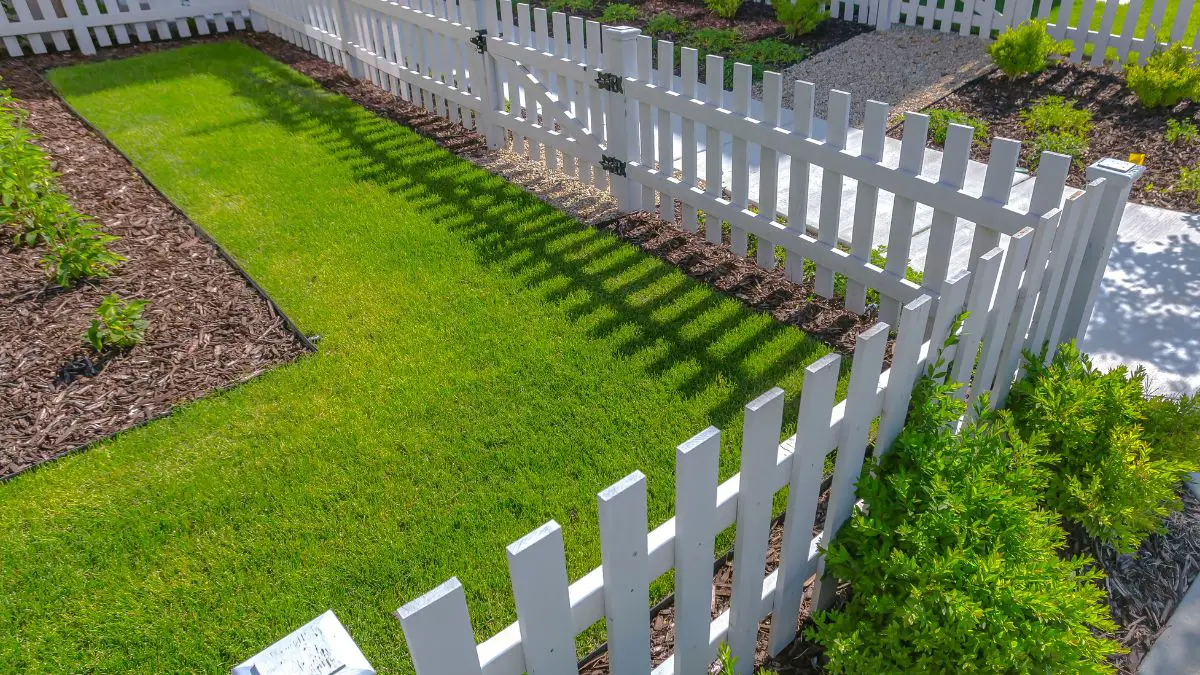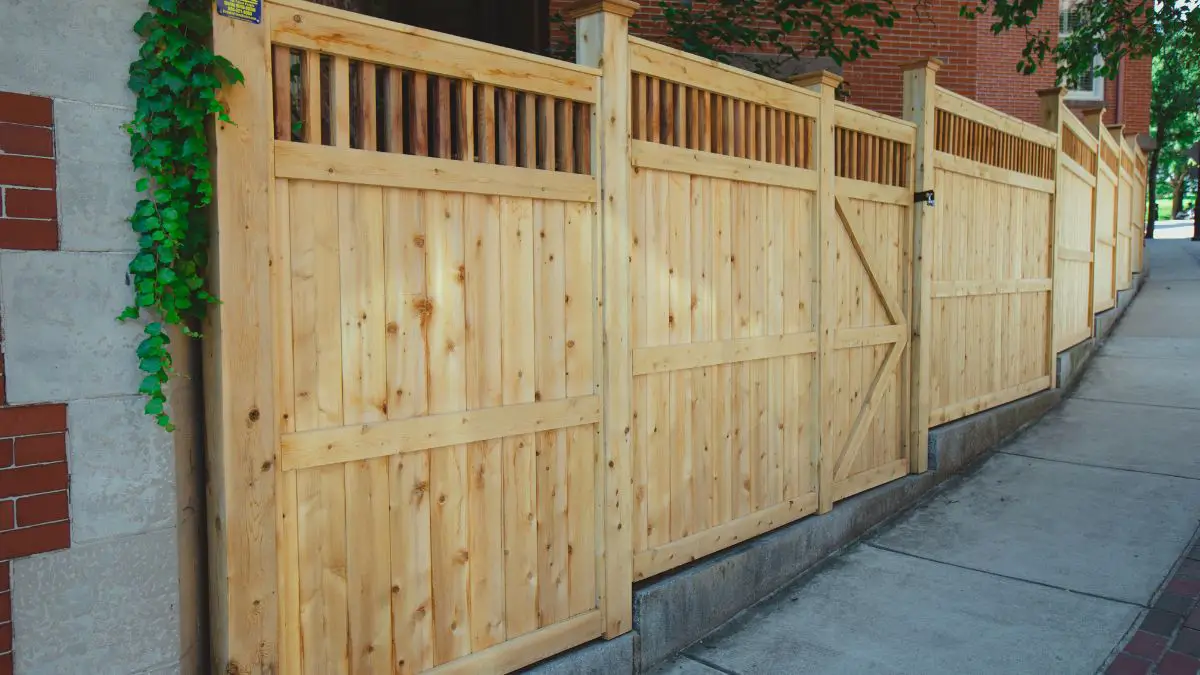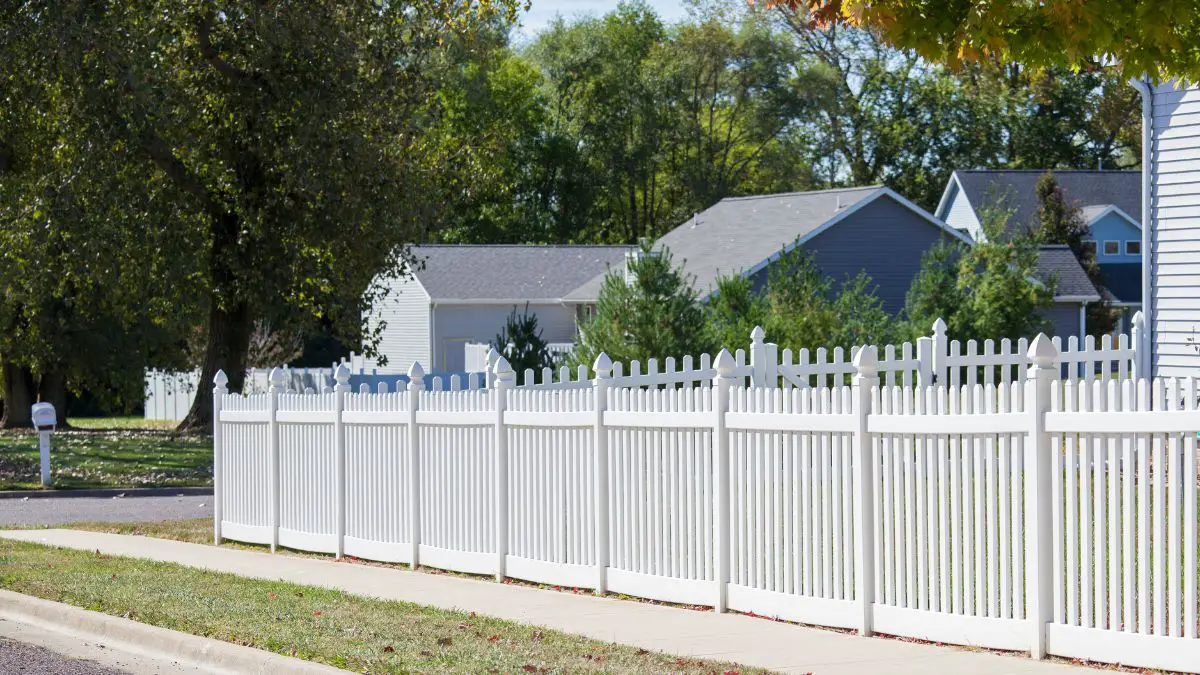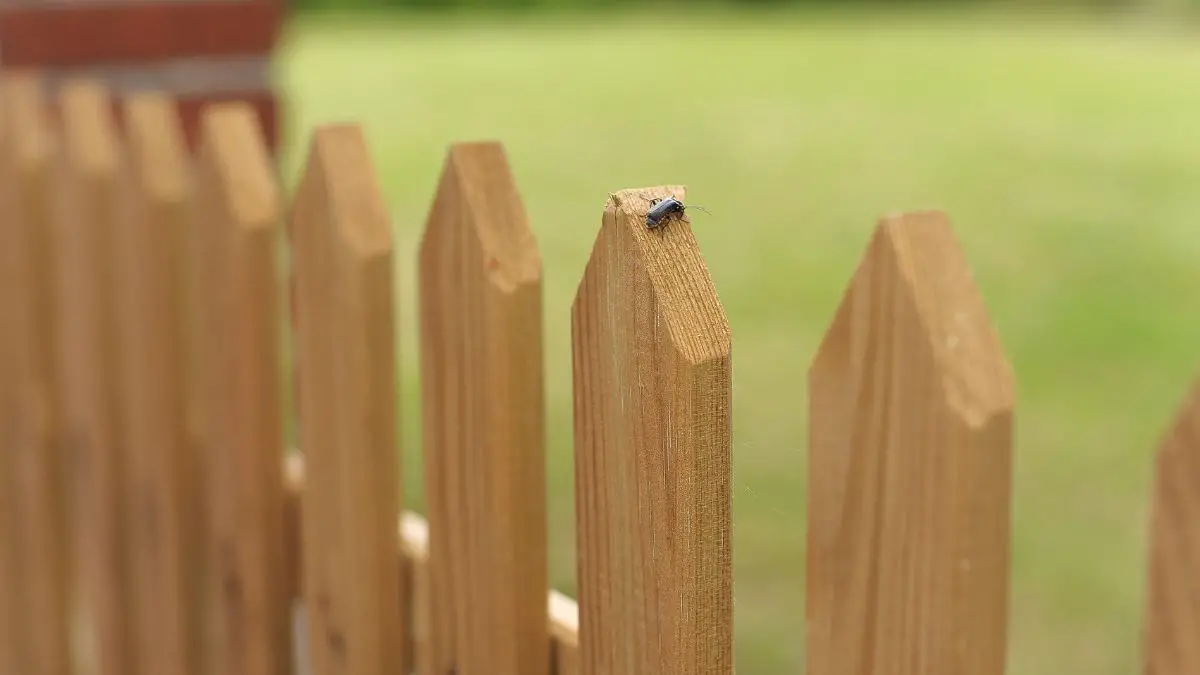The general rule is that fence posts should be buried underground at least one-third of their length. So, if the fence post is 6 feet long, it should be buried around 2 feet deep. This ensures stability and durability for the fence. An 8-foot post should be set 2.6 to 4 feet deep. Use a gravel base and fill the hole with quick-set concrete for stability.
But determining the ideal depth isn’t as simple as digging a hole and placing your post. Several factors come into play. The height of your fence, the weight it needs to support, and even the type of soil in your yard all affect how deep your fence posts should be.

Understanding Fence Post Depth
Let’s dive into the heart of the matter – understanding fence post depth. You’ve probably heard the general rule of thumb: the depth of your fence post should be about a third to half of the above ground level height of the fence. But what does this mean, and why is it important?
Picture your fence post as a tree. The part of the tree you see above ground is only half the story. Below the surface, a network of roots spreads out, giving the tree the stability it needs to stand tall and strong.
\Your fence post operates on the same principle. The part of the post buried underground acts like the tree’s roots, anchoring your fence and giving it the strength to withstand wind, weather, and weight.
Speaking of weight, this is a crucial factor in determining your fence post depth. Just as a taller tree needs a more extensive root system, a taller or heavier fence requires a deeper post. The weight of the fence panels, any additional features like trellises or decorations, and even the wind load – all these factors add to the weight your fence post needs to support.
Consider this
- A lightweight, decorative fence might only need a post depth of a third of the fence’s height.
- A taller, heavier fence, especially in a windy area, might need a post depth of up to half the fence’s height.
Remember, these are just guidelines. The specific conditions in your yard, such as the type of soil and the slope of the land, can also affect the ideal post depth.
Based on the rule of thumb that the depth of a fence post, here is a table showing the recommended post depths for posts ranging from 6 feet to 10 feet in 1-foot intervals:
| Post Height (Feet) | Post Depth (Feet) |
|---|---|
| 6 | 2 – 3 |
| 7 | 2.33 – 3.5 |
| 8 | 2.67 – 4 |
| 9 | 3 – 4.5 |
| 10 | 3.33 – 5 |
Please note that these are approximate values, and actual post depth may vary based on specific installation conditions such as soil type and fence weight.
How to Determine the Ideal Depth for Your Fence Post
Now that you understand the importance of fence post depth, let’s delve into the specifics. How do you calculate the ideal depth for your fence post? And what about the diameter of the post hole?
As mentioned earlier, the rule of thumb is that your fence post should be buried about a third to half of its above-ground height. But let’s break this down into more manageable steps:
- Measure the height of your fence post: This is the length from the base of the fence post to the top, not just the part that will be above ground.
- Calculate a third to half of this height: This will give you a good starting point for the depth of your entire post hole. For example, for a 6-foot level post, you’d want a hole about 2 to 3 feet deep.
- Consider the weight of your fence: If your fence is particularly heavy or will be subjected to strong winds, you might want to err on the side of a deeper hole.
- Consider your soil type: Loose or sandy soil might require a deeper hole to provide stability, while compact or clay soil might allow for a shallower hole.
Moving on to the diameter of the post hole. This might seem like a minor detail, but it can significantly impact the stability of your fence. A too narrow hole might not provide enough room for proper anchoring, while a hole that is too wide could require unnecessary extra work and materials.
Simple guideline to follow
- The diameter of your post hole should be about three times the width of your post.
So, for a standard 4×4 post, which is 3.5 inches wide, you’d want a hole about 10.5 inches deeper in diameter. This allows enough room for the post and any concrete or gravel you might use for additional stability.
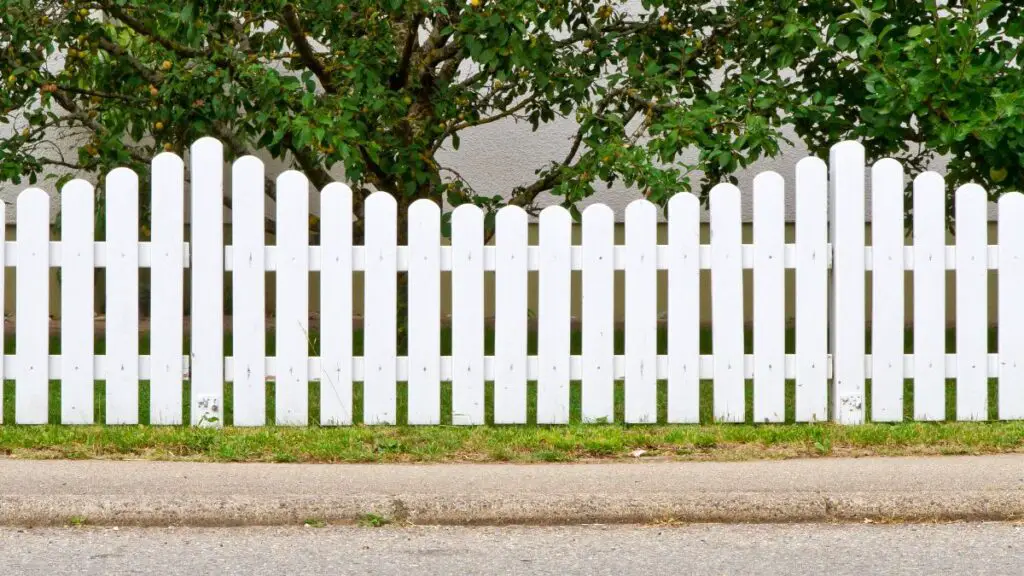
Fence Post Installation Process
You’ve done the math, made your calculations, and now you’re ready to get your hands dirty. It’s time to dive into the fence post installation process.
Digging the Post Hole
- Mark the Spot: Start by marking where you want your fence post. Use additional stake or spray paint to make the spot visible.
- Start Digging: Using a post-hole digger or an auger, start digging your hole. Remember, the hole should be about a third to half the actual height of your post and about three times the width of your post.
- Check the Depth: As you dig, regularly check the hole depth. It’s easy to get carried away and dig too deep, so keep your measurements handy.
- Prepare the Bottom: Add a few inches of gravel to the bottom once your hole is at the right depth. This helps with drainage and prevents your post from sitting in water.
Setting the Fence Post
- Place the Post: Carefully place your fence post in the hole. Make sure it’s centered and straight.
- Check the Alignment: Use a level to check the alignment of your post. Your post must be perfectly vertical or ‘plumb’. Adjust as necessary before moving on.
- Secure the Post: Temporarily secure your post in place with braces or stakes. This will hold it steady while you add the concrete.
Using Concrete in Fence Post Installation
Concrete plays a vital role in fence post installation. It acts as an anchor, holding your post firmly in place. Here’s how to use it:
- Prepare the Concrete: Mix your concrete according to the package instructions. You want a consistency similar to peanut butter.
- Add the Concrete: Pour the concrete into the hole around the post. Be sure to leave a few inches at the top for soil.
- Check the Post: Before the concrete sets, check your post again with the level. Make any necessary adjustments.
- Let it Set: Allow the concrete to set according to the package instructions. Resist the urge to move on to the next step until the concrete fence post is fully set.
- Backfill the Hole: Once the concrete fence post is set, backfill the hole with loose soil. This hides the concrete and gives a more natural look.
Common Misconceptions about Fence Post Depth
The 4-Foot Myth
One of the most prevalent myths is that fence post holes should always be 4 feet deep. You’ve probably heard this “rule” before, but let’s debunk it right now. The depth of your fence post hole should be determined by the fence height and weight of your fence, the type of soil condition in your yard, and the wind load in your area, not an arbitrary standard.
Digging a hole that’s deeper than necessary can lead to unnecessary work and wasted materials. It can also make it more difficult to ensure your post is perfectly vertical. So, forget the 4-foot myth. Instead, remember the conventional rule of thumb: your post hole should be about a third to half the height of your post.
The Role of Tools
Another misconception revolves around the tools used by professional fencers. Some believe all fence post holes should be this deep because professional fencing tools are designed to dig 3-foot deep holes. But this is a misunderstanding of the role of these correct tools.
Professional fencing tools are designed to be versatile and efficient. They can dig a 3-foot deep hole, but that doesn’t mean every hole they dig needs to be this deep. The depth of the hole should be determined by the specific needs of your fence, not the capabilities of your tools.
Dos and Don’ts of Setting Fence Posts
Setting fence posts is a task that requires precision, patience, and a bit of know-how. To help you navigate this process, we’ve compiled a list of dos and don’ts. These tips will help you avoid common pitfalls and ensure your fence stands strong and sturdy for years.
Do’s
- Before you start digging, make sure you know exactly where your fence will go. Check for any underground utilities and make sure you’re not encroaching on your neighbor’s property.
- If you’re using concrete, it needs time to set. Check the weather forecast and avoid installing fence posts before a rainstorm. Wet weather can interfere with the setting process and weaken your fence.
- Even the best-installed fence post can fail if it’s not properly maintained. Regularly check your fence for signs of damage or wear and make any necessary repairs promptly.
Don’t’s
- Setting fence posts isn’t a race. Rushing can lead to mistakes, like digging holes that are too shallow or not properly aligning your posts. Take your time to measure accurately and double-check your work.
- Some people believe that they can simply backfill the hole with soil. While this might seem easier, it doesn’t provide the same level of stability as concrete. Even if your soil is compact and hard, it’s still a good idea to use concrete for added strength.
- A post that looks straight to the naked eye might not actually be perfectly vertical. Always use a level to check the alignment of your posts. A post that’s even slightly off can affect the stability of your entire fence project.
Frequently Asked Questions
How deep should an 8-foot post be in the ground?
For an 8-foot post, the general rule of thumb suggests that the hole should be about a third to half the height of the post. This means you should aim for a hole approximately 2.6 to 4 feet deep. Factors like the weight of your fence and the type of soil in your yard can influence the ideal depth.
How deep should a fence post be for a 4-foot fence?
For a 4-foot fence, you’d want to dig a hole about 1.3 to 2 feet deep. Again, this is a guideline, and the specific conditions in your yard might require adjustments to these calculations. Always consider the weight of your fence and the soil type when determining the ideal depth.
Should fence posts be in concrete or soil?
While it might be tempting to backfill your post hole with soil, this method doesn’t provide the same level of stability as concrete. Concrete is an anchor, holding your post firmly in place and helping your fence withstand wind and weather. So, it’s best to set your posts in concrete for a sturdy, long-lasting fence.
How deep should fence posts be without concrete?
If you choose not to use concrete, you might need to dig a deeper hole to ensure stability. The exact depth will depend on factors like the height and weight of your fence and the soil type in your yard. However, your fence might not be as sturdy or long-lasting without concrete.



